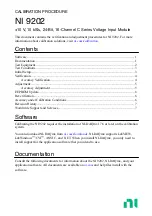
4
Building Technologies
A6V10214492_a_en_--
Fire safety and security products
03.2010
Dry contact output
Potential-free contact (Output not monitored)
-
Be used for controlling (e.g. closing a door).
-
Output control is not monitored.
-
An externally supplied 24 V DC voltage is not needed.
-
The jumper on the input/output module must be plugged onto J1/J3 (Fig. 6).
Fig.6 Input/output module jumper position J1
Fig. 7 Connection diagram for potential-free contact output
Configuration
The following configurations are possible by controller or configuration tools :
l
The contact is active, when:
‒
Normal mode: normally open NO closes
‒
Inverted mode: normally closed NC opens
l
After activating the output remains:
‒
Steady output
‒
Pulse output: How long the contact remains active can be configured by controller or
configuration tools (pulse duration).
l
Failsafe behavior when the FD18-BUS detector line is current-free or in degraded mode.
The error behavior defines the position of the output through controller or configuration
tools in case of an error:
‒
Off: Output remains in the same position as before the error
‒
Activation: Output is activated in case of an error
‒
Deactivation: Output is deactivated in case of an error
The controller does not monitor external equipment status (activated/inactivated).
Structure
The module consists of the module carrier, the printed circuit board and the cover. The printed
circuit board includes the LEDs. The LEDs indicate the states of the inputs/outputs. The cover
of the printed circuit board is transparent, so that the state of the LEDs is visible even when
the housing is closed.
To protect the modules from environmental influences, housing FDCH221 is optional.

























